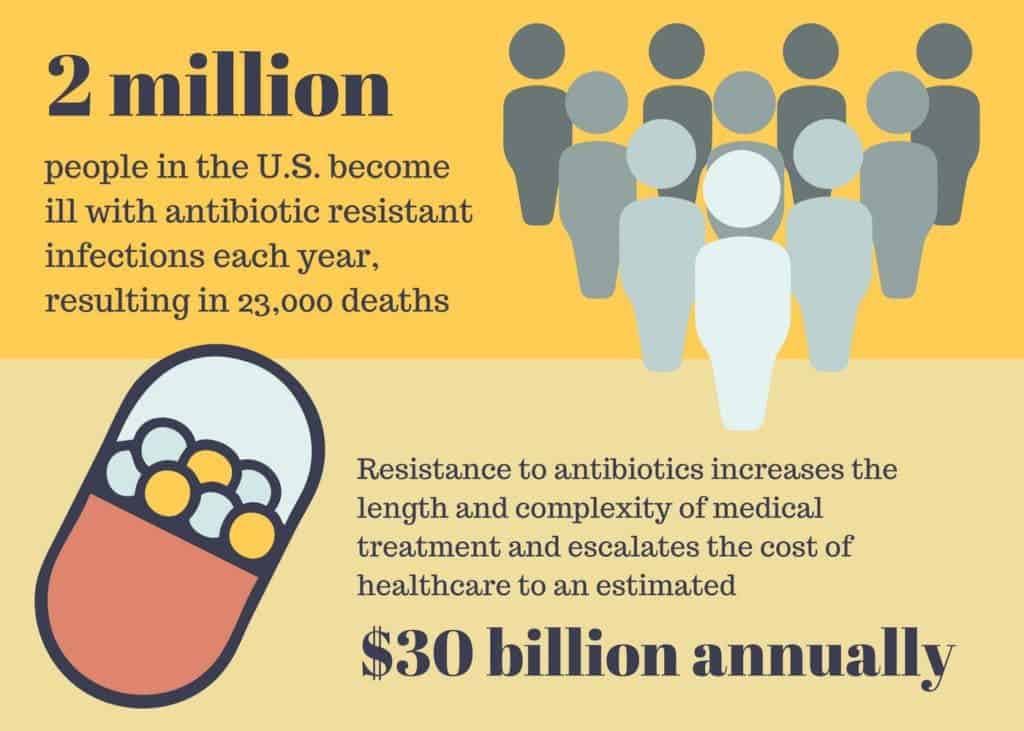A team of researchers from the European Antimicrobial Resistance Surveillance Network (EARS-Net) estimates that over 33,000 people die each year from antibiotic-resistant infections in Europe. They noted that the increasing burden of these infections is similar to that of tuberculosis, HIV, and influenza combined.
The study published in The Lancet Infectious Diseases looked into the incidence of five types of infections caused by antibiotic-resistant bacteria in 31 European Union/European Economic Activity (EU/EEA) countries and calculated the impact using the number of cases, attributable deaths, and overall health burden. This study is the first to estimate the burden of all types of infections with antibiotic-resistant bacteria and express it in DALYs.
The authors say the findings clearly show the health impact of antibiotic resistance in Europe and emphasizes the need for collaboration and coordination of EU/EEA countries to address the increasing public health problem of antibiotic resistance.
The study focused on eight species of bacteria frequently isolated from blood or cerebrospinal fluid (CSF) using EARS-Net data collected from 2015 from each of the 31 EU/EEA countries. The five types of infections were bloodstream infections (BSIs), urinary tract infections (UTIs), respiratory tract infections (RTIs), surgical site infections (SSIs), and other infections. The pathogens studied were colistin-resistant, carbapenem-resistant, or third-generation cephalosporin-resistant Escherichia coli and Klebsiella pneumoniae, methicillin-resistant Staphylococcus aureus (MRSA), and vancomycin-resistant Enterococcus faecalis and Enterococcus faecium.
The annual number of cases and incidence rate, the number of attributable deaths and attributable mortality rate, and the number and rate of disability-adjusted life-years (DALYs) were calculated using computational models. DALYs are particularly important because it gives an indication of the overall burden of disease. The researchers estimated that 671,689 infections were caused by the selected antibiotic-resistant bacteria in the EU/EEA countries in 2015, with 33,110 attributable deaths and 874,541 total DALYs. These corresponded to an incidence rate of 131 infections per 100,000 population, an attributable mortality rate of 6.44 deaths per 100,000 population, and 170 DALYs per 100,000 population. As a comparison, tuberculosis, HIV, and influenza altogether account for 183 DALYs per 100,000 population. As expected, the burden of antibiotic-resistant infections was highest among children under the age of 1 and adults over the age of 65.
Four drug-resistant bacteria had the largest impact, accounting for 67.9% of the DALYs per 100,000 population. This includes third-generation cephalosporin-resistant E coli, MRSA, carbapenem-resistant Pseudomonas aeruginosa, and third-generation cephalosporin-resistant K pneumoniae. Almost two-thirds of the infections (426,277, 63.5%) were associated with healthcare and accounted for 72.4% of attributable deaths and 74.9% of DALYs. The study also showed that the burden of antibiotic-resistant bacteria is focused on countries in southern and eastern Europe, where antibiotic consumption tends to be higher. Italy and Greece were the most affected countries, accounting for a combined 21.3% of total DALYs. When the team applied the same method to EARS-Net data from 2007, they found that the number of deaths attributable to antibiotic-resistant bacteria had more than doubled, from 11,144 in 2007 to 27,249 in 2015.
The US Centers for Disease Control and Prevention (CDC) published a report in 2013 that used 2011 surveillance to provide estimates of the burden of antibiotic resistance in the United States. That report showed that antibiotic-resistant infections affected over 2 million people a year, with 23,000 attributable deaths. The current EARS-Net incidence of antibiotic-resistant infections is 2.6 times higher than the CDC study with the attributable mortality 1.22 times higher.
A related commentary by Dr. Evelina Tacconelli and Dr. Maria Pezzani of the University of Verona strongly emphasized the urgent need for greater political commitment and dedicated resources for combating drug-resistant infections. They suggested approaches including a definition of a Europe-wide standard for antibiotic usage in hospitals and the community. They also proposed the establishment of a rate of resistance for specific antibiotics whereby countries would have to take urgent action, the creation of a minimum gold standard for infection control measures, and identification of annual targets for each country’s national antimicrobial resistance plans.












